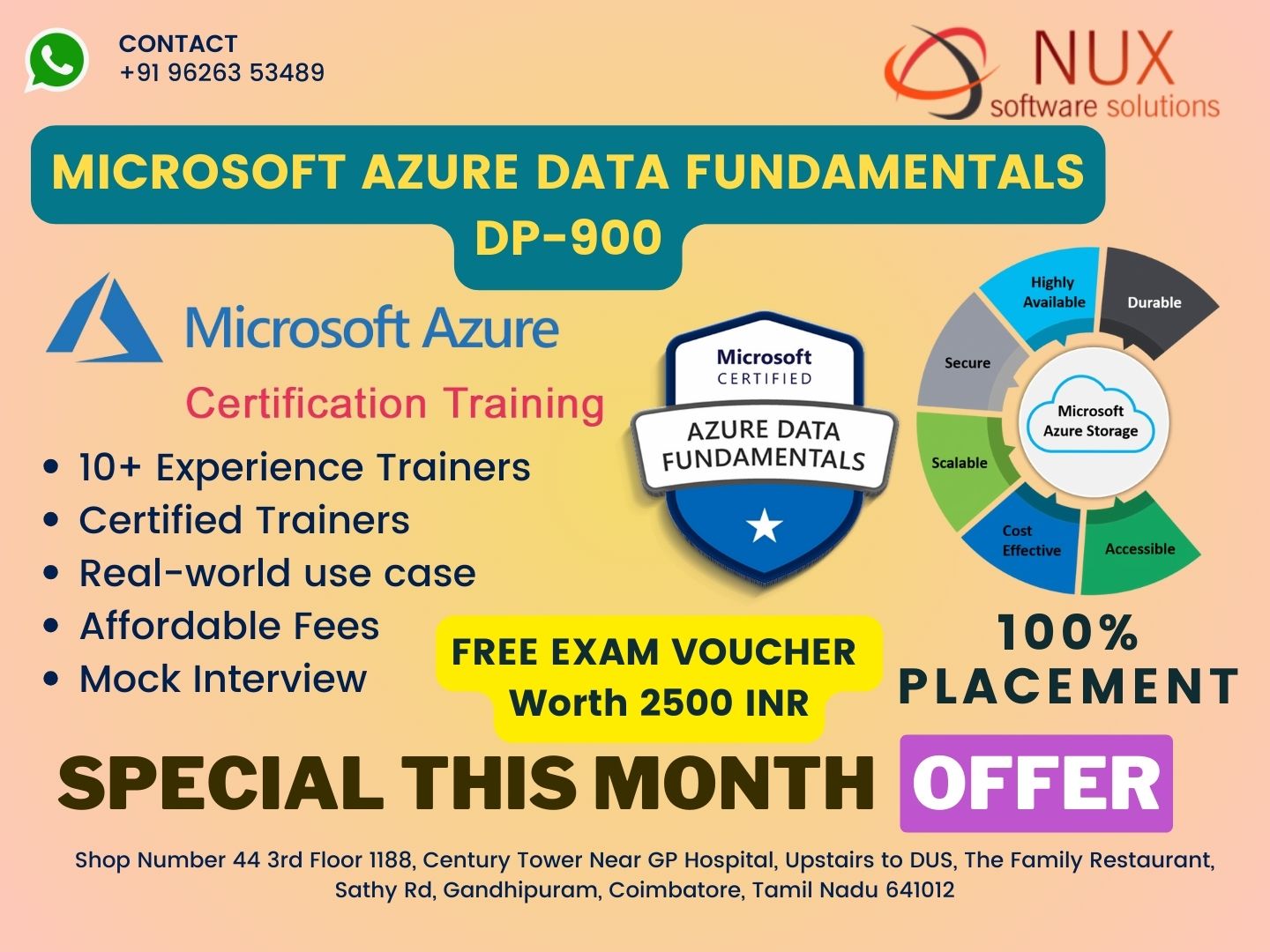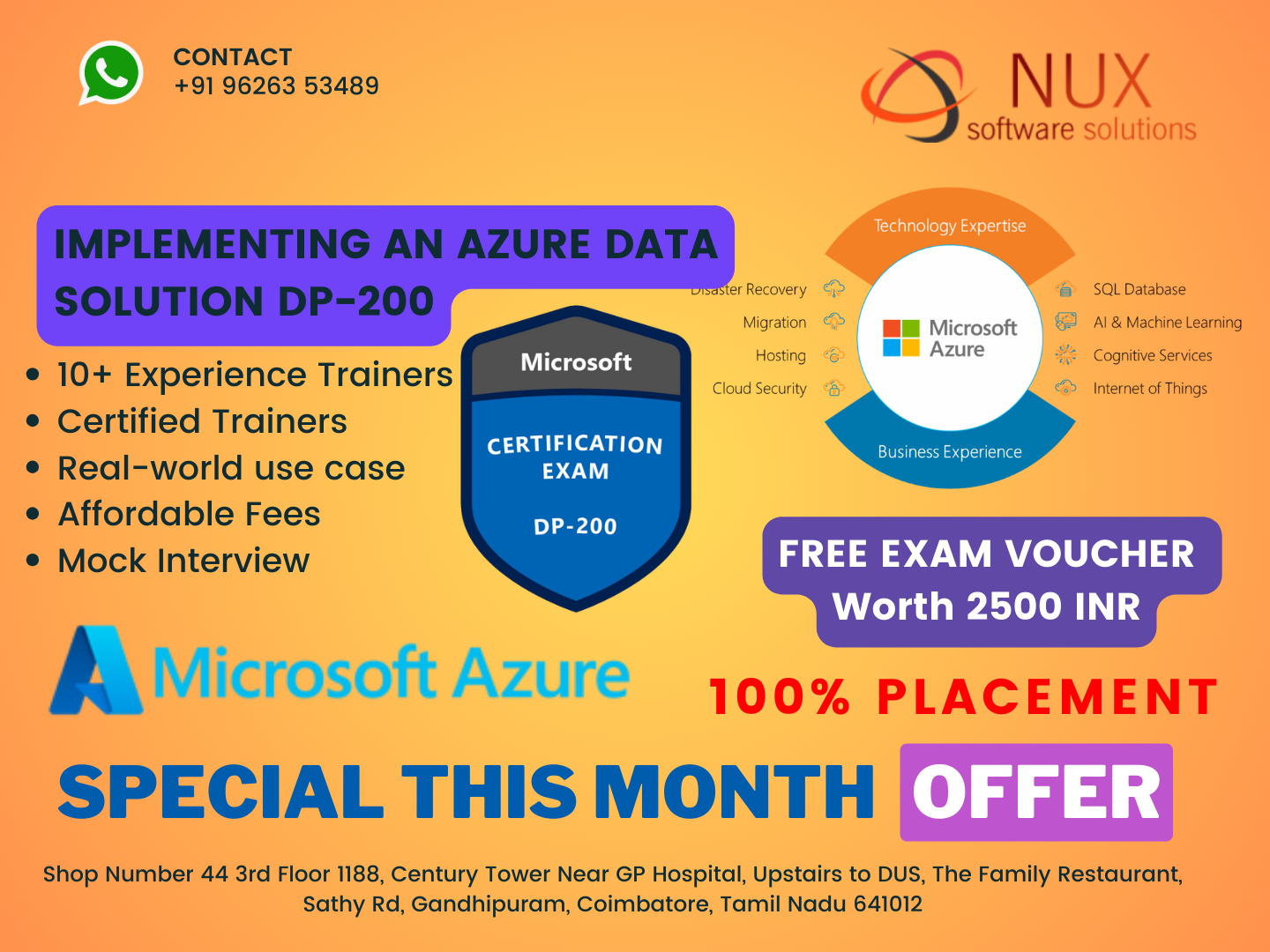Microsoft Azure Data Fundamentals – DP-900


Microsoft Azure Data Fundamentals DP-900 is one of the best cloud solutions available and to be an expert on this particular application Nux Software Solutions is your one-stop destination. Over the years, we have been one of the premium institutes when it comes to rendering quality training in various domains of IT. We have a team of experts and highly qualified faculties who have been rendering quality training to our students.
The Microsoft Azure Data Fundamentals DP-900
At Nux Software Solutions, we have designed highly customized and effective course material that is based on lab work and lots of hands-on applications. We have made sure that our students get maximum practical exposure that would help them achieve their goals in the professional fields.
Course Syllabus
Describe core data concepts (25–30%)
Describe features of structured data
Describe features of semi-structured
Describe features of unstructured data
Identify options for data storage
Describe common formats for data files
Describe types of databases
Describe common data workloads
Describe features of transactional workloads
Describe features of analytical workloads
Identify roles and responsibilities for data workloads
Describe responsibilities for database administrators
Describe responsibilities for data engineers
Describe responsibilities for data analysts
Identify considerations for relational data on Azure (20–25%)
Describe relational concepts
Identify features of relational data
Describe normalization and why it is used
Identify common structured query language (SQL) statements
Identify common database objects
Describe relational Azure data services
Describe the Azure SQL family of products including Azure SQL Database, Azure SQL Managed Instance, and SQL Server on Azure Virtual Machines
Identify Azure database services for open-source database systems
Describe considerations for working with non-relational data on Azure (15–20%)
Describe capabilities of Azure storage
Describe Azure Blob storage
Describe Azure File storage
Describe Azure Table storage
Describe capabilities and features of Azure Cosmos DB
Identify use cases for Azure Cosmos DB
Describe Azure Cosmos DB APIs
Describe an analytics workload on Azure (25–30%)
Describe common elements of large-scale analytics
Describe considerations for data ingestion and processing
Describe options for analytical data stores
Describe Azure services for data warehousing, including Azure Synapse Analytics, Azure Databricks, Microsoft Fabric, Azure HDInsight, and Azure Data Factory
Describe consideration for real-time data analytics
Describe the difference between batch and streaming data
Identify Microsoft cloud services for real-time analytics
Describe data visualization in Microsoft Power BI
Identify capabilities of Power BI
Describe features of data models in Power BI
Identify appropriate visualizations for data


